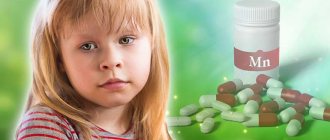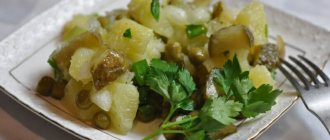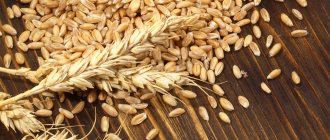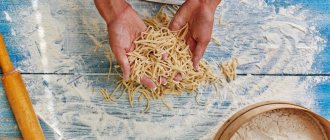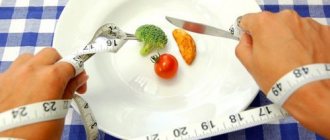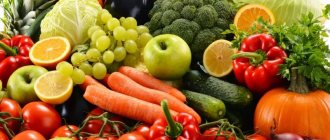An excellent option is fitness nutrition for weight loss. This is a real salvation for people who love to eat and want to lose excess weight.
The diet pleases with variety: fruits, vegetables, meat, fish, cereals. The main rule of the diet program is regular training and adherence to nutritional rules.
Physical exercise improves muscle tone, accelerates fat burning, improves mood and improves appearance. And special nutrition helps support the body during strength training and saturates it with useful substances. However, to achieve good results, you need to change your diet and eat by the hour.
What is the difference between a proper diet and a fast diet?
Fitness nutrition is a balanced diet for people who regularly exercise. This is not a diet, but a style of eating that allows you to increase endurance during training, improve your well-being and achieve excellent results. And they depend on what you use, in what quantity and when.
The main difference between fitness nutrition and diet is a varied diet and the presence of a large number of useful substances. The daily calorie content of strict diets is less than 1500 kcal, there are no vegetables, fruits, grains, or complete protein.
Important! A fitness diet provokes weight loss without stressing the body, and the diet consists exclusively of natural products. Express diets involve strict restrictions, and this can lead to stress and frequent breakdowns.
When creating the right diet, a person will feel energetic, but at the same time will get rid of excess fat. Fitness nutrition allows you to lose weight, but at the same time maintain the normal condition of your hair, skin, nails, and teeth.
Be sure to watch: Gallery image with caption: Simple recommendations from famous trainers on what to eat before a workout to lose weight Gallery image with caption: What to eat before a workout: recommendations from experts Gallery image with caption: What is best to eat after strength training and cardio to burn fat Gallery image with caption: What and how long after training can you eat?
Recipe for fitness enthusiasts
So that you don’t get tired of regularly eating boiled chicken breast or steamed fish, we offer you a healthy and very tasty dish that you can safely eat while on a diet.
Protein Diversity: Chicken Breast for Athletes
Many people believe that dietary chicken cannot be made juicy. Our recipe for homemade breast with spices in milk will certainly debunk this myth. Another feature of this dish for fitness enthusiasts is that you don’t have to spend the whole evening in the kitchen to prepare it. After all, everything ingenious is simple!
For a healthy dish you will need the following food set:
- 1 kg breast;
- 1 liter of milk with low fat content;
- spices to taste.
Step-by-step preparation of delicious food:
- Sprinkle chicken fillet with spices. It’s better not to get carried away with salt, but black pepper, coriander and a pinch of sweet paprika are the perfect ensemble.
- Boil the milk in a thick-walled container. Place the chicken breasts into the liquid, after exactly 30 seconds turn off the heat and cover with a lid.
- Wrap the pan in a warm blanket and let the chicken cook on its own for 2 hours.
This meat is delicious both hot and cold.
A piece of juicy chicken breast can be safely placed on black bread, add a slice of hard cheese (replaced with a slice of tomato or cucumber) and garnish with a lettuce leaf. The result is a hearty and healthy sandwich that meets all the laws of the diet.
Principles of creating a menu for weight loss
Fitness nutrition does not imply strict restrictions; the menu should be varied. A novice athlete should supplement the menu with foods rich in proteins and carbohydrates.
Important! If there is a lack of carbohydrates in the menu, it is impossible to conduct a full workout, since energy is quickly spent and the person feels tired.
Before adjusting your diet during weight loss training, it is recommended to consult with a trainer or sports nutritionist. During classes, it is prohibited to overeat or snack on the go. You should only eat if you really feel hungry; eating “for company” or out of boredom is prohibited.
Main products – vegetables and fruits
The daily diet of a person involved in fitness should consist of approximately half fruits and vegetables.
In addition, it is recommended to eat fresh greens. Thanks to vitamins, minerals, and phytonutrients, the athlete receives the necessary dose of nutrients, and his body becomes stronger. The main part of the diet should be vegetables. Fruits contain a large amount of sugars, which saturate the body with energy, but if their supply is not quickly used, they will accumulate in the body.
For this reason, professional trainers advise consuming fruits before 12 noon, 30 minutes before training. It is recommended to opt for citrus fruits, bananas, and apples. You can also include sour varieties of berries, such as cherries, in your diet.
We drink water
Compliance with the drinking regime is a very important point. To prevent dehydration, you need to drink 1.5 liters of water.
Water balance must be maintained even during training, the main thing is to do it correctly.
During exercise, the athlete spends energy, which the body borrows from fat reserves, then sweat begins to be released along with excess calories.
You need to drink water in small, regular doses. If a person drinks a lot of liquid, he will get tired faster.
Important! During classes, you can drink filtered water, green tea, compote (unsweetened), and mineral water. You should avoid tonic drinks (coffee, black tea, cocoa, energy drinks) and alcohol.
Only healthy products
Proteins are the building material for muscles, so the athlete must supplement his diet with foods rich in this substance. Otherwise, the muscles will grow slowly and the person will get tired quickly. In addition, proteins are needed to burn fat.
Best Protein Sources:
- Eggs.
- Milk and products made from it (low fat content).
- Fish, meat (low-fat varieties).
- Seafood.
- Legumes.
The athlete’s diet needs to be replenished with polyunsaturated fatty acids, which have a beneficial effect on the condition of the body (especially the cardiovascular system).
Important! Fat-rich foods should be consumed after workouts. This is due to the fact that such food breaks down slowly and can interfere with full-fledged sports activities.
Foods rich in polyunsaturated fats:
- Olive oil, flax oil, mustard oil, sunflower oil, soybean oil, peanut oil.
- Salmon, herring, trout, tuna.
- Sesame, nuts.
- Spinach and other greens.
Slow carbohydrates during fitness provide a gradual supply of energy. It is better to consume complex carbohydrates before exercise, and simple carbohydrates after.
Foods with complex carbohydrates:
- Cereals (especially buckwheat).
- Vegetables.
- Mushrooms.
- Sour varieties of fruits.
- Berries.
In addition, when creating a menu, you need to pay attention to the quality of the products; they must be fresh and natural.
What to give up when dieting when playing sports
Fatty, fried foods and bakery products should be excluded from the menu or their quantity reduced. It is better to avoid semi-finished products completely. It is better to consume bread and fried foods before 14:00 (minimum portion).
Alcohol and soda contribute to excess weight gain. Therefore, they also need to be abandoned. Store-bought sauces are also prohibited.
You may also be interested in: Workouts after alcohol
Vitamins and microelements
When playing sports, you need to control the number of calories and the ratio of proteins, fats, carbohydrates in each serving.
Important! Before noon, it is allowed to consume more foods rich in carbohydrates, and after 12 o'clock proteins should predominate. This is due to the fact that in the first half of the day a person needs energy, and in the second half he needs to restore strength after training.
The daily diet should consist of 35% proteins, 55% carbohydrates, 10% fats.
Meal regimen and portion size
One serving of food during a fitness diet should not exceed 200-300 g. The athlete should eat in small portions - 5 to 6 times in 24 hours. The pause between meals is from 2 to 3 hours.
After a meal, a person should feel slightly hungry. This is due to the fact that the body has not yet received the necessary nutrients. But literally after 15-30 minutes the feeling of hunger will disappear.
Basic recommendations for fitness nutrition for weight loss
The most important thing is to abandon the stereotypical diets of “fruits and healthy vegetables.” In general, when creating a diet, it is better to start from the amount of protein in it. Any physically active person should consume a minimum of 1.5 g of protein per 1 kg of current (not target or ideal) body weight. This will ensure the body recovers after training, and will allow you not to lose a significant amount of muscle mass due to a “deficient” diet.
Women often feel that it is impossible to “eat” so much with ordinary foods. Not at all, include something protein in every meal. For breakfast and afternoon snacks - dishes made from dense cottage cheese, which contains at least 18 g of protein per 100 g serving. For lunch and dinner - meat, fish, poultry, tofu. On the contrary, most women can do without sports nutrition and get all the necessary proteins from food.
Should I take protein? Protein is neither an indicator of your “fitness advancement” nor a mandatory product. With an increase in lean muscle mass and a decrease in fat mass, it simply becomes problematic to “eat” the required 140-150 g of protein with just one meal. That's why some people drink cocktails to get 30 g of quality protein with one of them.
The second point is fats. Often they are kicked out of fitness diets by the word “completely,” which is a big mistake. The connection between insufficient fat intake and chronic inflammation of muscles and joints, as well as an unbalanced diet and hormonal disorders has been proven. Ordinary people often blame the barbells and dumbbells themselves for the fact that women’s reproductive function is disrupted during active exercise, but the fault here is not strength, but an unbalanced diet in terms of fats. So, you need to eat at least 0.6 g of fat per 1 kg of weight if you are a woman, and 0.4 if you are a man. At the same time, if your daily caloric intake is not very low, and physical activity is high, it is better to “gain” additional calories from fats if the predominant type of activity is strength training.
The third point is carbohydrates. This is their number, unlike “medical” diets, it is calculated individually. But the lowest limit for an amateur should be 2-2.5 g per 1 kg of weight. Anything lower is fraught with complex adaptations to a low-carb diet, and cannot be considered healthy in the long term.
The fourth point is energy value. It is a big mistake to think that diets for ordinary people with 1200-1500 kcal are ideal for fitness specialists. The exception is, perhaps, people involved in recreational walking and some kind of gymnastics without weights. Otherwise, a kcal deficit of 10% is considered the most acceptable for an amateur. Deficits of 15-25% are used to prepare for competitions, or in a very short period, in general, no more than 3-4 weeks for amateurs.
What is? Keep foods as simple as possible - meat, fish, poultry, eggs and dairy products for protein, cereals and wholemeal bread for complex carbohydrates, vegetable oils, nuts and fatty fish to obtain the necessary fats. Vegetables for fiber. Fruits as dessert. You can eat everything else, too, if it fits into your calorie and nutritional matrix, but, as they say, without fanaticism, since “everything else” usually has a fairly low nutritional value.
Is it worth using sports supplements?
Sports nutrition is an ideal supplement to the diet of people who want to lose weight, stay fit and always be in good shape.
Vitamin-mineral complexes saturate the body with useful substances. Protein replenishes the body's need for protein, and creatine is a source of energy.
Thanks to sports supplements, the diet becomes more varied. They cannot replace good nutrition, but they will allow you to achieve your goals faster.
How you can use food to increase the effectiveness of your fat burning workouts
Burning fat in problem areas is quite difficult, to speed up this process, you need to follow the following rules:
- Eat 5 to 6 times a day, but make sure that the serving size does not exceed 300 g.
- To speed up fat burning, drink 1.5-2 liters of liquid per day. Water normalizes digestion and speeds up metabolism.
- To activate metabolic processes, increase the amount of protein foods, the breakdown of which requires more energy.
- If you want to boost your metabolism and lose weight faster, then don’t deny yourself a hearty breakfast. A proper morning meal awakens the body, and hunger will not bother you until lunchtime.
This style of eating must be followed for a long time, only this way you will achieve impressive results.
Fitness menu for the week
How to create a fitness menu correctly
- Determine your calorie intake, and at the same time the ratio of nutrients - proteins, fats and carbohydrates - in your fitness menu*.
- Adjust the norm of KBJU according to your goal: losing weight, maintaining weight or gaining muscle mass*.
- Divide the final KBZHU into 5-6 doses during the day so that breakfast accounts for about 25% of calories, lunch and dinner 35% and 20%, respectively. Snacks should not exceed 10% of your norm.
- Distribute nutrients in such a way that the majority of carbohydrates and fats occur in the first half of the day, and for dinner - more than a quarter of the daily protein intake. By the way, you need to have dinner no later than two to three hours before bedtime. A table of calorie content for basic foods can be found here.
- Select products according to the KBZHU. Give preference to healthier (natural and fresh) products. Here's a little cheat sheet.
- Cook (we prefer oven baking, boiling and steaming), divide into portions and eat according to schedule!
- Adjust the menu according to your body's signals.
*You can read more about this in our previous FitBlog. This is what a menu for a girl will look like for 1600 calories :
7:00 breakfast:
50g oatmeal, 100g apple, 25g nuts
10:00 snack:
200g pp cake
13:00 lunch:
50g buckwheat, 150g chicken fillet, vegetable salad (tomatoes, cucumbers, peppers, lettuce, onions, a little olive oil)
17:00 snack:
150g cheesecakes (cottage cheese 100g, rice flour 1 tablespoon, 1 egg, sakhzam)
20:00 dinner:
Two egg omelette, vegetables (raw or steamed/baked in the oven without sauce).
The main rules of the fitness menu:
- The weight of all products is taken into account in raw form. Complex dishes are the sum of the KBZHU of all products. Oatmeal on water is KBZHU oatmeal. Oatmeal with milk - KBZHU oatmeal and milk. To count, you can download a special application to your phone. For example, FatSecret.
- Water is not included in the regular fitness menu. But this does not negate the fact that you need to drink water daily and in sufficient volumes (1.5 - 3 liters per day).
- Follow not only the correct menu, but also the diet. Your body will thank you for your regularity and will begin to tell you when it’s time to have a snack.
- Meals should not be rearranged. This is due to the peculiarities of food processing in our body depending on the time of day.
- Sometimes allow yourself a day of fitness naughtiness! Athletes call it a cheat meal.
“You need to approach compiling your first fitness menu responsibly. This process may even seem very complicated, but believe me, in three to four weeks you will be measuring the required volume of oatmeal by eye and will be able to automatically fold containers with food. And you’ll even take a fresh look at the varied restaurant menus. There is a lot of healthy or at least healthy food there! In most cases, you just need to ask to bring the sauce separately from the dish,” Natalia is sure.
Bonus! Cake recipe
KBJU per 100g: 98.49/ 8.85/3.38/7.65
- For one cake: 3 tbsp. wheat bran, ground in a blender, 1 large egg, 50g milk (up to 2.5%), 1 tsp. baking powder, sugar to taste. Mix all ingredients and bake 1 cake at a time in the oven preheated to 180 degrees for about 15 minutes.
- Cream: soft cottage cheese 360g, sakhzam to taste, any fruits, berries (can be frozen).
- Mix cottage cheese with sakhzam. Cut the berries into slices
- Assemble the cake: cake layer, berries, cream, cake layer, berries, cream, cake layer, berries, cream, cake layer
- Leave in the refrigerator overnight to drink away
Enjoy your meal!
Menu advice and recipes from renowned fitness trainer Simon Lawson
When creating a menu, consider the advice of nutritionists:
- Make a list of products in a notebook, and then distribute them by day.
- Don't skip your morning meal.
- In the evening, eat protein foods: cottage cheese (low fat), chicken, fish.
- Have snacks between meals. For example, 1 fruit, no more than 50 g of dried fruits and nuts.
- Drink filtered water, it speeds up metabolism, cleanses the gastrointestinal tract, and reduces appetite.
- Coffee drinks containing a lot of calories (latte, mocha, cappuccino) are best drunk before 12 noon.
- Create a meal plan for the week.
- Look for new recipes, you need food to be varied.
Important! Be sure to keep track of the caloric content of what you eat in a special notebook. So, you can control the amount of food and be able to stop in time.
Famous fitness trainer Simon Lawson shares recipes that are included in his diet:
- Vegetable salad with chicken breast. Chop lettuce leaves (spinach, arugula, cabbage), paprika, avocado, add lemon juice. Then add grilled chicken to the salad. Add a little salt, pepper, olive oil or natural yogurt.
- Omelet with shrimps. Beat eggs with milk, add salt, and add boiled shrimp. Pour the mixture onto a baking sheet and place in the oven until done. This dish can be combined with your favorite vegetables.
- Berry-banana smoothie. Beat berries, banana and a little low-fat milk in a blender. The cocktail should be consumed immediately after preparation in the morning.
Fitness nutrition. Menu - how to choose dishes?
Undoubtedly, one could imagine a ready-made menu planned for every day. But this makes no sense, since the main thing you need to know when creating a diet is the basic principles. It’s easy to remember them, just count from 4 to 1. However, we’re not in a math lesson, so we’ll decipher this magical order. Each number corresponds to the number of servings of a particular element. So, 4 is protein. Three - dietary fiber. Two are carbohydrates. One is fats. Now let’s look at the described fitness nutrition as an example.
A day you need to eat 4 servings of protein, which is found in chicken breast, lean fish, seafood, eggs, and cottage cheese.
3 servings of vegetables and fruits. For example, lettuce, apples, bananas, grapefruit, cucumbers, etc.
2 servings of complex carbohydrates found in cereals and whole grain breads.
1 serving of healthy fats found in seeds and nuts, fish, oil.
That is, the diet will be approximately the same.
Breakfast: oatmeal and egg whites.
Second breakfast: cottage cheese, apple.
Lunch: vegetable salad dressed with olive oil, lean fish and rice.
Afternoon snack: banana and low-fat yogurt.
Dinner: chicken breast, spinach.
Main conclusions
As you can see, a proper and balanced diet as a style of eating when doing fitness is the basis of success for a person who wants to lose weight.
You shouldn't expect stunning results right away, you just need to change your lifestyle and enjoy every day.
With regular exercise in the gym, following a diet, diet and rules for creating a menu for women or men, you can get rid of excess weight and tighten your figure without harm to your health.
